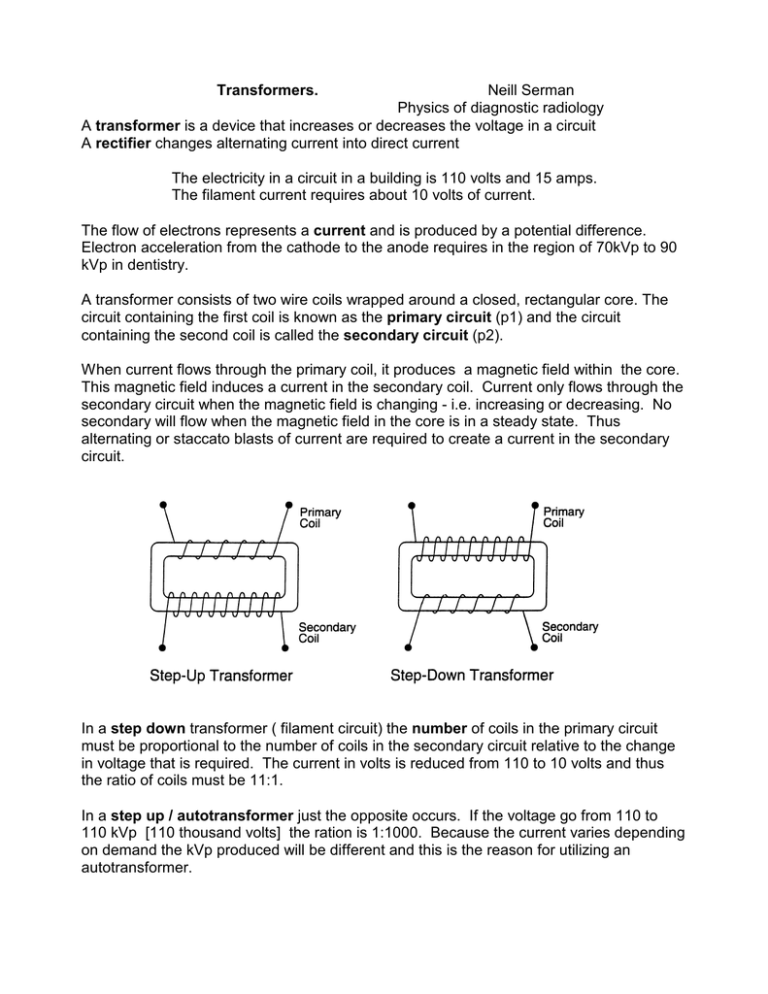Transformers
advertisement

Transformers. Neill Serman Physics of diagnostic radiology A transformer is a device that increases or decreases the voltage in a circuit A rectifier changes alternating current into direct current The electricity in a circuit in a building is 110 volts and 15 amps. The filament current requires about 10 volts of current. The flow of electrons represents a current and is produced by a potential difference. Electron acceleration from the cathode to the anode requires in the region of 70kVp to 90 kVp in dentistry. A transformer consists of two wire coils wrapped around a closed, rectangular core. The circuit containing the first coil is known as the primary circuit (p1) and the circuit containing the second coil is called the secondary circuit (p2). When current flows through the primary coil, it produces a magnetic field within the core. This magnetic field induces a current in the secondary coil. Current only flows through the secondary circuit when the magnetic field is changing - i.e. increasing or decreasing. No secondary will flow when the magnetic field in the core is in a steady state. Thus alternating or staccato blasts of current are required to create a current in the secondary circuit. In a step down transformer ( filament circuit) the number of coils in the primary circuit must be proportional to the number of coils in the secondary circuit relative to the change in voltage that is required. The current in volts is reduced from 110 to 10 volts and thus the ratio of coils must be 11:1. In a step up / autotransformer just the opposite occurs. If the voltage go from 110 to 110 kVp [110 thousand volts] the ration is 1:1000. Because the current varies depending on demand the kVp produced will be different and this is the reason for utilizing an autotransformer.


